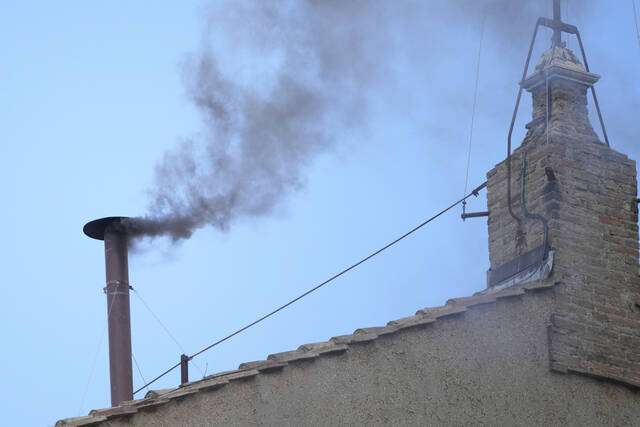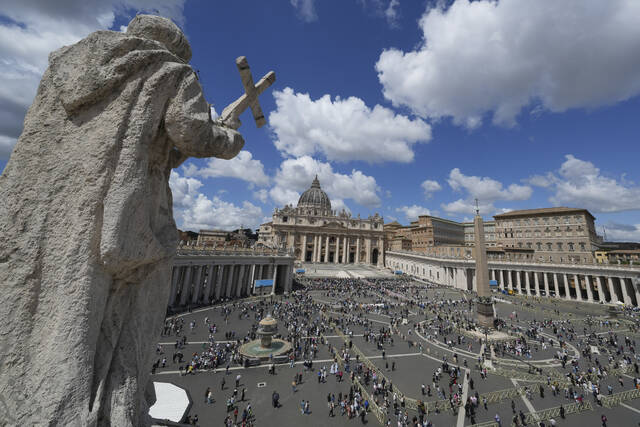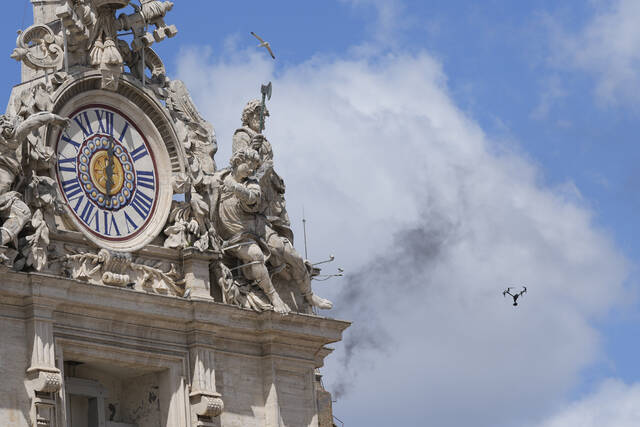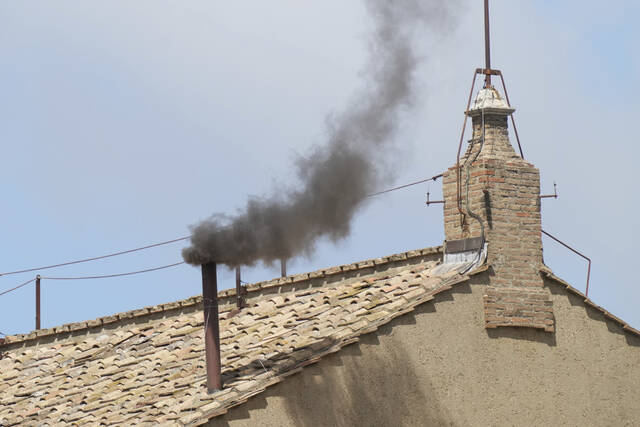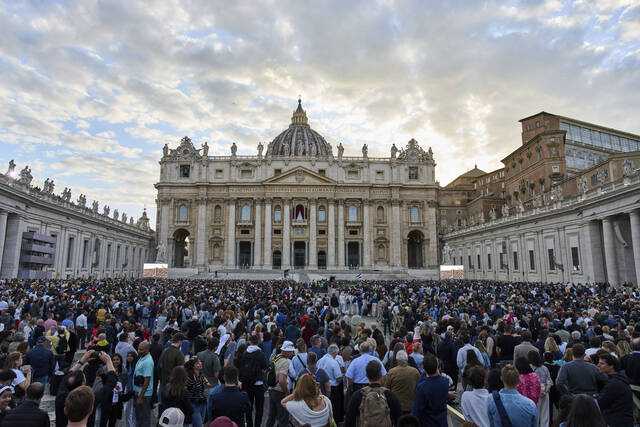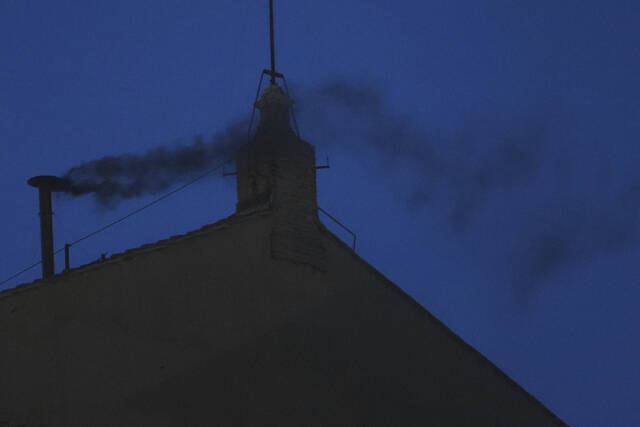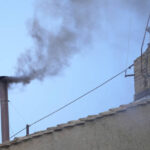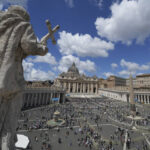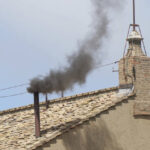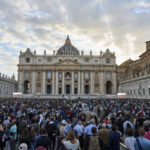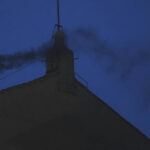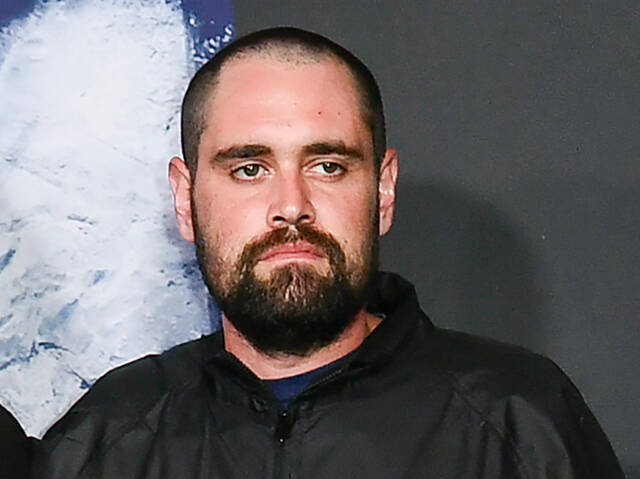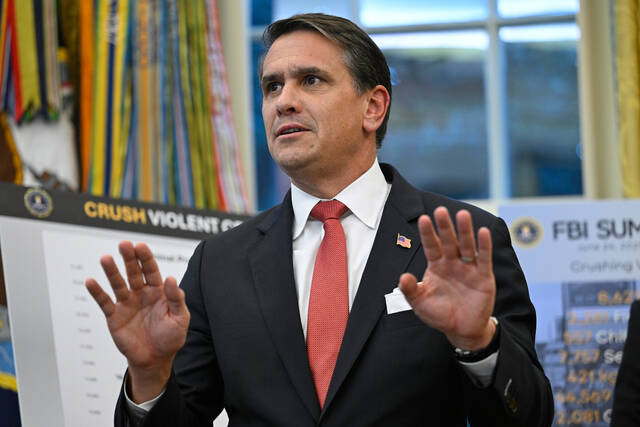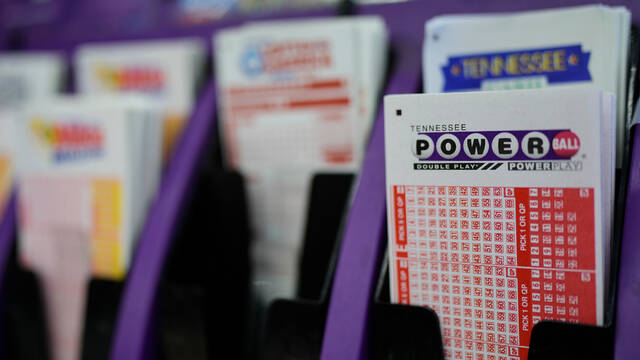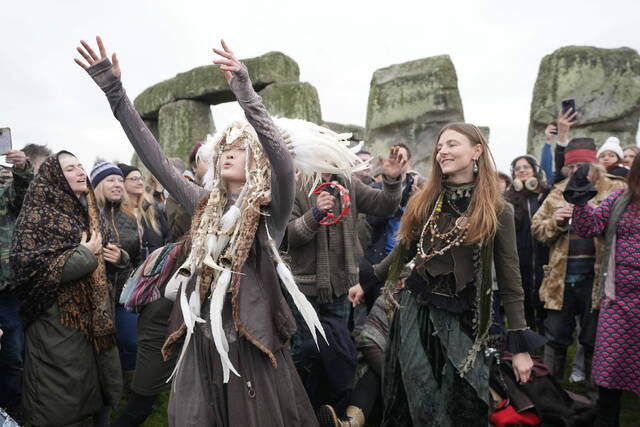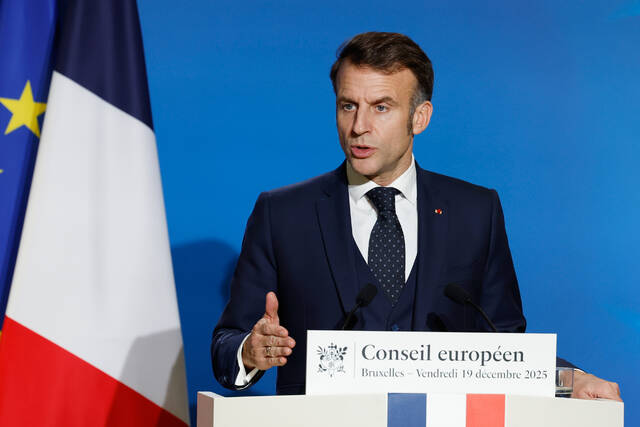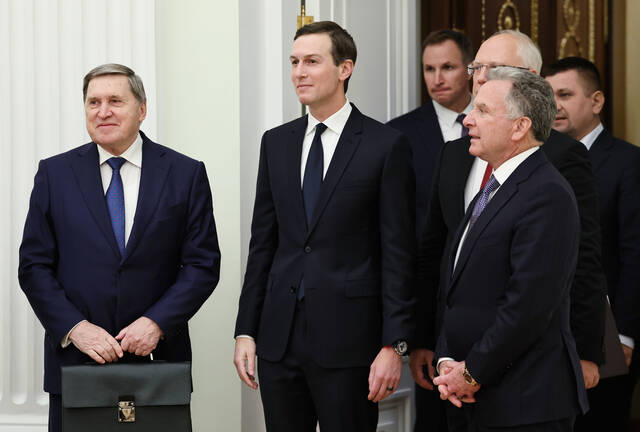VATICAN CITY — Cardinals failed again Thursday morning to find a successor to Pope Francis, sending black smoke billowing up through the Sistine Chapel chimney after two more inconclusive rounds of conclave voting.
The black smoke poured out at 11:50 a.m., signalling that the second and third ballots of the conclave had failed to find consensus on a leader for the 1.4 billion-member Catholic Church.
With no one securing the necessary two-thirds majority, or 89 votes, the 133 cardinals returned to the Vatican residences where they are being sequestered. They will have lunch and then return to the Sistine Chapel for the afternoon voting session. Two more ballots are possible Thursday.
Despite the disappointment, hopes were still high that a pope would be chosen quickly, perhaps as early as Thursday.
“I hope by this evening, returning to Rome, I’ll find white smoke,” said Cardinal Giovanni Battista Re, the 91-year-old dean of the College of Cardinals who presided over the Mass before the conclave. Re is not participating in the balloting because only cardinals under 80 are eligible to cast their vote.
Re, who was quoted by Italian media as speaking Thursday in Pompeii, said he was certain that cardinals would elect “the pope that the church and world need today.”
Eyes on the chimney
For the general public, the rhythm of the voting is dictated in many ways by the Vatican television cameras: You know a smoke signal is near when the cameras resume their fixed shot on the Sistine Chapel’s skinny chimney, with white smoke indicating a winner, and black meaning no consensus.
On Thursday, large school groups joined the mix of humanity awaiting the outcome in St. Peter’s Square. They blended in with people participating in pre-planned Holy Year pilgrimages and journalists from around the world who have descended on Rome to document the election.
“We are hoping for the white smoke tonight,” said Pedro Deget, 22, a finance student from Argentina who is travelling in Italy with his family. He said his family visited Rome during the Argentine pope’s pontificate and were hoping for a new pope in his image.
“Francis did well in opening the church to the outside world, but on other fronts maybe he didn’t do enough. We’ll see if the next one will be able to do more,” Deget said from the piazza.
On Wednesday night, the billowing black smoke poured out of the chapel chimney just after 9 p.m., about 4.5 hours after the cardinals filed into the Sistine Chapel to take their oaths. The late hour prompted speculation about what took so long for the 133 electors to cast and count their ballots. Hypotheses abound: Did they have to redo the vote? Did someone get sick or need translation help? Did the papal preacher take a long time to deliver his meditation before the voting began?
“They probably need more time,” said Costanza Ranaldi, a 63-year-old who travelled from Pescara in Italy’s Abruzzo region to the Vatican.
Some of the 133 voting cardinals had said they expected a short conclave to replace Francis. But it will likely take a few rounds of voting for one man to secure the two-thirds majority, or 89 ballots, necessary to become the 267th pope.
For much of the past century, the conclave has needed between three and 14 ballots to find a pope. John Paul I — the pope who reigned for 33 days in 1978 — was elected on the fourth ballot. His successor, John Paul II, needed eight. Francis was elected on the fifth in 2013.
Conjecture on contenders
The cardinals opened the secretive, centuries-old ritual Wednesday afternoon, participating in a rite more theatrical than even Hollywood could create.
Cardinal Pietro Parolin, the 70-year-old secretary of state under Francis and a leading contender to succeed him as pope, assumed leadership of the proceedings as the most senior cardinal under age 80 eligible to participate.
Parolin seemed to have received the blessings from none other than Re, the respected elder among the cardinals. During the traditional exchange of peace during the pre-conclave Mass on Wednesday, Re was caught on a hot mic telling Parolin “Auguri doppio” or “double best wishes.” Italians debated whether it was just a customary gesture acknowledging Parolin’s role running conclave, or if it might have been an informal endorsement or even a premature congratulations.
The cardinals were sequestered from the outside world, their cellphones surrendered and airwaves around the Vatican jammed to prevent all communications until they find a new pope.
Francis named 108 of the 133 “princes of the church,” choosing many pastors in his image from far-flung countries like Mongolia, Sweden and Tonga that had never had a cardinal before.
His decision to surpass the usual limit of 120 cardinal electors has both lengthened the amount of time it takes for each vote to be processed and injected more uncertainty into a process that is always full of mystery and suspense.


